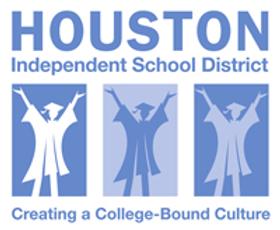As the largest public school system in Texas and the seventh-largest school district in the country, Houston Independent School District faces a monumental task. The district serves a widely diverse student population of more than 203,000 in the district鈥檚 279 schools. To meet the needs of so many students, the district provides a range of educational opportunities, including an alternative learning center and online learning options. The district also boasts charter schools, college prep high schools, and a school for the visual and performing arts.
History of Houston Independent School District
states the Houston Independent School District was first established in the 1920s, during a time of exponential growth and change in the state鈥檚 school system. Houston ISD replaced the Harrisburg School System after the state legislature voted to separate governance of schools from municipal government responsibilities. The school district boasted a student population of just over 1,800 in 1899 to more than 8,800 by 1927.
During the middle years of the 20th century, discrimination became an issue for Houston schools. In addition to the separation of African-Americans from white students that was common in southern schools at this time, Mexican Americans that resided in the Houston area also complained of discrimination. The Mexican American community launched a series of protests and boycotts to voice their displeasure with the discrimination practices, particularly in light of the Supreme Court ruling in Brown v. Board of Education in 1954. Eventually, the district successfully integrated the inclusion of all students into all of the schools within the Houston system.
Houston Independent School District Today
Today鈥檚 Houston Independent School District looks much different than it did during its humble beginnings nearly one century ago. The system includes 279 elementary, middle, and high schools, which include a few specialty schools like a performing arts school and a college prep academy. In addition to the funding the district receives at the federal and state level, the district also features its own foundation that works to raise money for the district through private sources.
The school system is composed of a widely diverse student population, which includes:
- Hispanic American students (62 percent)
- African American students (27 percent)
- White students (8 percent)
- Asian American students (3 percent)
The rest of the student population consists of students of mixed race, Native Americans, and Native Hawaiians. Students are assigned to schools by location, but transfer options are available to students who want to attend a school that is not their neighborhood school.
This video offers a look at one of the district's middle schools.
About the Houston Independent School District Foundation
The is a separate entity from the school system, governed by its own volunteer board comprised of community members. The foundation is responsible for fundraising, management of private funds, and accountability for how those funds are spent. The goals of the foundation include:
- Placement of an effective principal in every school
- Placement of an effective teacher in every classroom
- Creation of>advanced placement programs, and the Apollo 20 School Turnaround Project, which focuses on turning around struggling schools.Performance of Houston Independent School DistrictDespite its size and diversity, the Houston Independent School District is striving to create a positive, productive learning environment for all of its students. To that end, the district offers a variety of schooling alternatives for students looking for something beyond the traditional classroom experience. These alternatives include:
- Charter Schools, like Briarmeadow Charter School
- Alternative Schools, such as Thomas Horace Rogers School
- Magnet Schools, including Rusk School
- College Prep High Schools, like Challenge Early College High School
- High School for the Performing and Visual Arts
In addition, the school district features schools to serve a specific portion of the community population, including a school for homeless students, and one for disabled students.With efforts to meet the needs of all its students, the school district has seen some measure of success. The Houston Independent School District states it is enjoying its highest number of students earning top scores on college entrance examinations and gaining college credit through Advanced Placement programs. The district also claims its graduation rate is at an all-time high and its dropout rate is at an all-time low.This video looks at the reading program in one of the HISD schools.Online Services for Houston StudentsIn addition to the large variety of schools available throughout the Houston Independent School District, the system also boasts a number of online services teachers can access from any location. According to the district鈥檚 library resources , some of the online services available today include:- Resources that provide audio and video offerings of authors and illustrators, as well as audio readings of portions of classic books
- Training and lesson plan assistance that is aligned to the curriculum used by the school system
- Videos and content from Discover Education that teachers can use in the classroom
- Resources like learning games, maps and charts, and visuals teachers can use to enhance their own lesson plans
Online resources for teachers are a cost-effective way the Houston school system can raise the bar on their teaching quality. When this is combined with other assets, such as a variety of schools and additional funding, academic success is much more attainable. With many steps in place to provide the very best for Houston students, it is easy to see how the Houston Independent School District is boasting statistics that demonstrate their students are achieving their goals.Questions? Contact us on Facebook. @publicschoolreview















